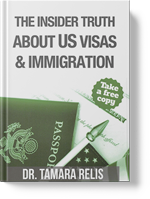
The goal of many non-citizens and non-lawful permanent residents (LPRs) of the U.S. is to, eventually, obtain a green card so that they are allowed to indefinitely stay in the U.S. Many foreign nationals achieve this goal through an adjustment of status, which is the process through which someone applies for a green card, to become a lawful permanent resident, while they are already legally residing in the U.S.
Love brings many people over to the U.S. on a permanent basis through spousal visas and the K-1 fiancé visa. These two paths to a green card fall under the category of “Green Card through Family” with the USCIS (U.S. Citizenship and Immigration Services). Those with E2 investor visas have a similar, yet winding, path to obtaining a green card.
From K-1 to Lawful Permanent Resident
Many people on K-1 visas simply wait to get married and then apply for adjustment of status, but they also have the option of starting the process as soon as they marry if they are technically still on the K-1 visa and have married before the end of the 90-day deadline.
The main form the foreign national must fill out is Form I-485, which is the application to adjust status to permanent lawful residency. As long as the foreign national is properly inspected and admitted to the U.S. on a K-1 visa and enters a bona fide marriage with the petitioner who filed Form I-129F, Form I-485 may be completed and sent to the USCIS.
When submitting Form I-485 as a K-1 visa holder, one must submit many documents to verify their identity and show that they entered into a bona fide marriage. Among other things, they must show copies of their birth and marriage certificates, proof of legal arrival, the Affidavit of Support, a medical and vaccination report, and copies of relevant passport pages. The visa holder must also be present in the U.S. when submitting Form I-485.
From Spouse to Lawful Permanent Resident
Foreign-national spouses of U.S. citizens and lawful permanent residents have the added advantage of being an immediate relative, which can make the adjustment of status process easier in some ways. For one, they may file Form I-485 at the same time as Form I-130, which is the initial petition for an alien relative to be brought over or remain in the U.S. K-1 visa holders must usually wait for their Form I-129F to be approved before filing Form I-485.
Spouses must still be inspected at a recognized port of entry before filing Form I-485, and they must be physically present in the U.S. before filing that form. Spouses of lawful permanent residents who wish to be LPRs themselves must apply through the family preference immigrant category, which is nearly identical to the immediate relative immigrant category.
Investing One’s Way to a Green Card
The E-2 investor visa is one of the most popular ways for non-citizens and non-LPRs to gain lawful residency in the U.S. This visa is valid for two years and may also be renewed in two-year increments. There is no limit to the number of renewals.
While the E-2 visa does not lead directly to a green card, there are various ways to get from E-2 to filing Form I-485. Some E-2 visa holders may choose to invest even more money in their American enterprise and obtain the EB-5 visa. The EB-5 visa is more heavily involved commerce-wise than the E-2 visa. For instance, an EB-5 investor must create, through their American enterprise, at least 10 full-time jobs for qualifying employees. Nevertheless, it is a good option for some E-2 investors.
Otherwise, an E-2 visa holder may get sponsored for a green card by the American company after obtaining an employment-based visa. This often works well for employees of the company and not necessarily for the true E-2 investors. Eventually, Form I-485 must be filled out for the former E-2 visa holder to get permanent lawful residency.
Timing is Everything
The logistics of adjusting one’s status to become a lawful permanent resident of the U.S. can be maddeningly complex. On top of that, one must be vigilant about filing the right forms at the right time. For example, an E-2 visa holder must have an “intent to depart” the U.S. after their E-2 visa expires; this can create headaches for honest, hard-working immigrants who simply want a crack at the American Dream without having to reapply every two years.
If you or someone you love wants to find out how they may obtain a green card, the best thing to do is to contact a knowledgeable immigration attorney. Dr. Tamara Relis of RelisLaw has decades of experience helping people move around the world and achieve their dreams. Our team looks forward to helping you with your immigration matter.
Check out our related video:
What are the differences between E-1 and E-2 visas?







